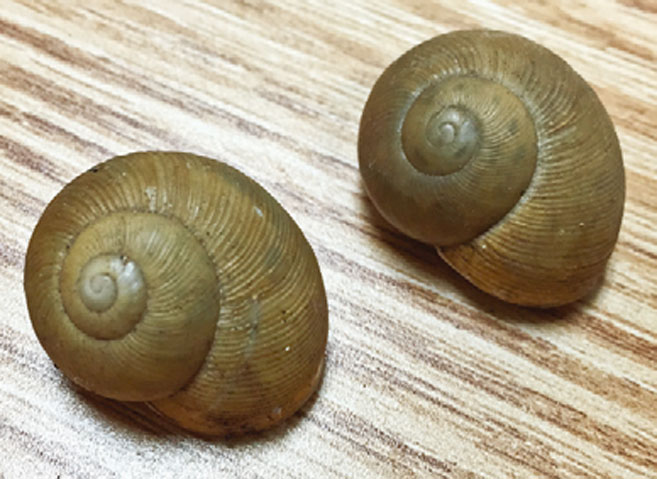Snails, Slugs, Millipedes, Oh My!
Tasty treats hanging from your branches become a beacon for everything from squirrels to scale.
Tropical fruit trees have a multitude of pests and pathogens that can sometimes make it difficult to successfully produce a crop. When a fruit tree becomes weak or sickly, snails are often singled out by growers as the cause of the damage because they’re so easy to spot and have reputation as being pests. I was recently contacted by a commercial guava grower who explained to me that her new trees were being devastated by snails, and she desperately wanted to know how to kill the pesky little fellas.
It’s true that some snails or slugs can be very damaging to plants with soft, tender growth; however, tropical fruit trees are not likely to be damaged. I visited her grove to evaluate the situation.
MYSTERY DEATHS
When I arrived, I found hundreds of snails near the bases and on the trunks of many of her dead or declining guava trees. I also found her drip irrigation was set up so that the emitters were completely missing the trees and many of the dead trees had been planted two to three inches too deep. The trees died of water stress because they were not planted correctly – not by the hand of the harmless, cone-shaped tree snails that were feeding on the lichen found on the trunks of the decaying trees.
The snails were not the reason the young trees died. They were simply found at the scene of the crime. If the grower would have carried out her plan to treat and kill the snails, it would have cost her time, money and material – and it would have been completely ineffective.
There are a few snails to look out for: the cone-shaped Giant African Land Snail and the round Cuban Land Snail (see above), which feeds on new and tender growth. Look for snail damage in the interior of a leaf, not on the edges. It looks like someone punched or drilled a hole in the leaf. Slugs – which look like snails without shells – do similar damage.
HUMANE TRAPS
If you find snails damaging your plants, you can pick them off and relocate them away from tender young plants. Or you can set out a trap made from the bottom of a two-liter plastic bottle and fill it with beer. Snails and slugs are attracted to the yeast and drown. Snail baits work if you’re desperate, but read the label and follow directions precisely – some are toxic to dogs or cats. Rotate the snail baits so you are not using the same active ingredient over and over – this will cause snails to become resistant to the pesticide.
If you disturb the mulch layer, you will almost always find millipedes. They become pests when they decide, en masse, to slip under your door and into your homes. This is known as a millipede migration and the exact cause is unknown, though it is thought to coincide with rain events. Millipedes cannot survive in your home for very long (usually less than 24 hours) and are easy enough to remove. They do not harm tropical fruit trees, and are in fact beneficial, playing a role in decomposition by turning old leaves, twigs and wood chips into nutrients that will later be used by other plants.
So before you rush to the home improvement store to buy snail bait or millipede poison, make sure you properly ID your pest and make sure it’s actually doing the damage you are trying to avoid.
{ BOLO: Giant African Land Snail }
This rapidly reproducing and devastating pest can damage or kill over 500 different species of plants. The Giant African Land Snail (GALS) was found in Florida in 2011, and the Florida Department of Agriculture and Consumer Services quickly moved to eradicate this pest. The snail is relatively easy to identify. It’s the only cone-shaped snail in South Florida that does not have any rings on its shell. Instead, it has stripes from the tip of the snail to base and an inward curl on the lip ringing the shell’s opening (see picture). If you find this snail, call the Division of Plant Industry’s hotline at 1-888-397-1517. Do not touch this, or any other snails, with your bare hands. Snails harbor parasites capable of causing disease.
Questions on tropical fruit pests? Call a UF/IFAS extension agent at 305-248-3311. Homeowners: Adrian Hunsberger (ext. 236); commercial tropical fruit growers: Jeff Wasielewski (ext. 227); and commercial vegetable growers: Qingren Wang (ext. 234).








